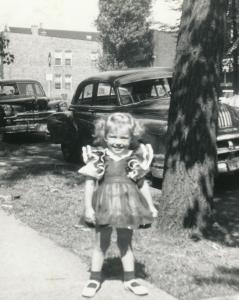Looking for design inspiration? Browse our curated collections!
April 18th, 2014 - 09:24 PM

I have many memories that go back to before I was five years old, some as early as two, when my family lived in one of the older working class neighborhoods on the southwest side of Chicago. When I was about four, I remember discovering a box of colorful 1-inch tiles that had been forgotten under a wooden walkway in a neighbor's overgrown yard and feeling very fascinated with them. Although I reluctantly left them there because I knew that I would be in trouble if I took them home, for some reason I never forgot them and the grid and potential of those tiles has always been with me and has been a constant in my art work. Perhaps they already existed in my psyche and I only became aware after I saw them or perhaps some window was open in me and they just imprinted. Whatever the reason, the concept of a modular grid with movable tiles is very inherent and fundamental for me and I can trace it back to this one memory. The grid motif is a strong factor in how I like to arrange space and maybe even the entire world, as I perceive it. I feel that things are discrete and have boundaries, but belong to a larger community of similar entities that can be arranged in various ways. The square of the grid may also reflect natural crystalline structure, with that of the mineral pyrite being the best example.
During the same period that I discovered the tiles, I also remember seeing a mound in a vacant lot (called a prairie) around the corner of the block where we lived and imagining that a giant was buried there. I was just very curious about what was under the ground and developed the habit of glancing down when I walked, looking for clues. The first time I learned that something interesting could be present under the ground was when my mother took me to the Field Natural History Museum and I saw the Tyrannosaurus Rex in the great hall. Soon afterwards, I found a partially buried bone in our backyard and imagined that it was part of a dinosaur that was lying there just under the surface neatly confined to the area bound by our fence. I didn't really believe my mother when she told me that the bone had been buried by our dog and that there was no dinosaur.
As I grew, my fascination with things under the ground expanded from buried dinosaurs and mythical giants to rocks, minerals and human artifacts. When I was 11, I found a book at the local library about Schliemann and his discoveries at ancient Troy and declared that I wanted to become an archaeologist when I grew up. As it turned out, after graduating high school, I followed a somewhat convoluted path to Colorado where I became a geologist. Although I was somewhat interested in the practical side of geology and its applications, what really interested me most were two things: the beauty and the nature of inorganic matter, especially crystalline forms and the morphing of organic remains into fossils, and stratigraphy, layers of rocks providing a detailed, albeit incomplete, record of earth's history. It was exciting to break away a piece of layered rock with my hammer to reveal a flat surface with fossils or woody chips laid down an unimaginably long time ago. I felt privileged to be the first human to see that particular tiny glimpse of a mysterious ancient world. Maybe it's just a small thing, but in my mind, it's precious and beautiful. Following is a poem, written several years ago at Colorado National Monument, reflecting some of these feelings along with their spiritual implications:
Monuments
Eolian sands, how can I know your ancient winds
That arranged each grain, now frozen in place?
Your dunes buries alive and so lithified
Into canyon walls that bear your trace.
Vast monuments you are but for whom do you stand?
Continuing sculpture in this remote arid land
Glowing warm red in the golden dusk light
Strong silhouettes on a moonlit night
Your bedded layers like pages in a book
Crumbling, laying open, inviting me to look
Far down the corridor of time and to see
When earth was not home to creatures like me.
True monuments you are, but for whom do you stand?
For the dinosaurs that lie in the nearby sand?
They lie were they fell on an ancient shore
In a vanished world, extinct forevermore.
What can I hope to find in this place?
Some truth, some answer or an abyss?
Questions like these your presence demands.
Great monuments you are, but for whom do you stand?
Beyond geology, this magical nature of excavation and discovery extended to human artifacts.
Comments
There are no comments on this blog. Click here to post the first comment.